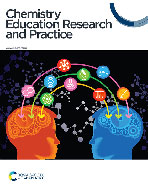Student success and the high school-university transition: 100 years of chemistry education research
Abstract
The 100th anniversary of the first article (published in 1921) examining student success and the high school to university transition in chemistry provides an excellent opportunity to consider what has – and has not – changed in chemistry education. This review details the development and findings of chemistry education research specifically as it relates to student learning and success over this extended time period. After considering the changing educational context and definition of success, this research will be described under three main themes: different ways of knowing (learning objectives and outcomes), thinking (scientific reasoning and problem solving), and learning (preferences and approaches to studying). A key finding is that while our understanding of effective teaching and learning has advanced significantly since the early 1900s, so too have the curriculum expectations and cognitive demands placed upon students increased significantly. Thus despite the many advances and innovations in chemistry education, an achievement gap persists between high school and post-secondary education for many students to this day. A comprehensive picture of the factors influencing student success developed from the research literature not only helps understand this disconnect; it also provides an opportunity to reflect on lessons learned for teaching, learning, and directions for future research.


 Please wait while we load your content...
Please wait while we load your content...